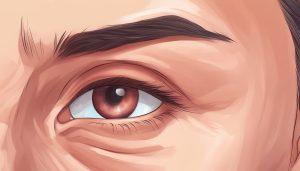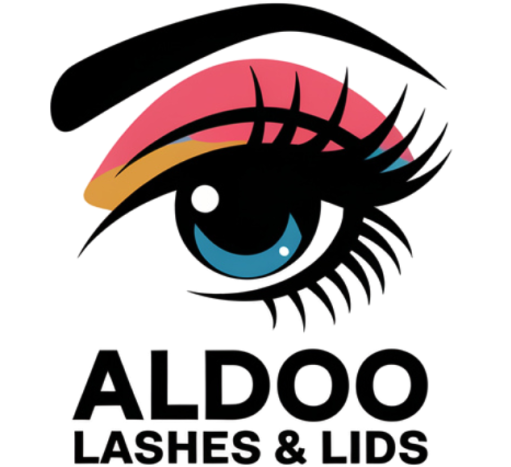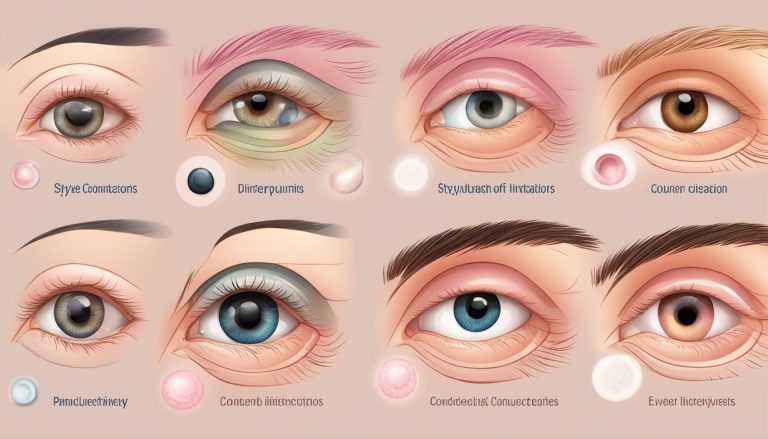Beyond Styes: Identifying and Treating Other Common Eye Lid Infections
Beyond Styes: Identifying and Treating Other Common Eye Lid Infections

One of the worst things that can happen is getting an illness on your eyelid. There are many things, like germs and viruses, that can make the eyelids swell up. It is important to see a doctor right away if your eyelids hurt, swell, or turn red.
There are different kinds of eyelid infections, and each has its own signs and risk factors. Some of these are chalazia, blepharitis, and styes. Different types of infections can cause different signs, such as itching, burning, or pain around the eye. A doctor can help you figure out what kind of sickness you have and suggest the best way to treat it.
Main Points
- Eyelid diseases can be caused by many things, such as viruses and bacteria.
- There are different kinds of eyelid infections, and each has its own signs and risk factors.
- To properly identify and treat an eye lid infection, it’s important to see a doctor as soon as possible.
Why and how it happens
Illnesses of the eyelids can be caused by many things, such as skin conditions and allergies, as well as bacterial and viral illnesses. If you know what causes eyelid infections and what makes you more likely to get them, you can take steps to avoid them.
Bacteria
Eye lid illnesses are often caused by bacterial infections. Folks get these diseases when germs get into the eye and start to grow on the eyelid. Most of the time, Staphylococcus aureus and Streptococcus pneumoniae are the germs that cause infections in the eyelids. These germs can be passed on by touching things that are dirty, like makeup brushes or towels.
Viruses
Eyelid diseases can also be caused by viruses. Herpes simplex virus (HSV) is the most common virus that leads to eyelid diseases. People can get this virus from touching a sick person or from touching things that are dirty, like makeup brushes or towels.
Problems with the skin and allergies
Eye lid diseases can also be caused by skin problems and allergies. Headaches and skin problems like rosacea can make the eyelids swell, which can lead to an infection. Eye lid diseases can also be caused by allergies to contact lenses, eye makeup, and makeup for the eyes.
It is important to keep yourself clean if you don’t want to get an eyelid infection. This means not touching your eyes, washing your hands often, and not sharing personal things like towels or makeup brushes. Take care of your health by cleaning and disinfecting your contact lenses on a regular basis if you wear them.
If you get an illness in your eyelid, you should see a doctor right away. Antibiotics or other medicines can be given by your doctor to help get rid of the infection and stop it from spreading.
Different Kinds of Eyelid Infections
To get the right treatment for an eyelid infection, you need to know what kind of infection you have. There are different kinds of eyelid infections, and each has its own signs and ways to treat them.
Stye
A stye is a common type of infection in the eyelid that happens when an oil gland or hair shaft gets sick. Styes usually show up on the eyelid as a red, painful bump and can make the area swell and hurt. They’re often treated with warm packs and antibiotic cream because they are caused by germs. There are times when a healthcare worker may need to drain a stye.
A Chalazion
When an oil gland in the eyelid gets clogged, it can lead to a chalazion, which is a type of eyelash infection. It usually looks like a small, painless bump on the eyelid and can make the eye swell and turn red. A lot of the time, warm cloths and antibiotic ointment are enough to treat chalazions. But sometimes, a doctor may need to drain them.
Blurred vision
Blepharitis is an inflammation of the eyelids that can be caused by eyelash mites, a bacterial infection, or oil glands that are blocked. Usually, it makes the eyes red, itchy, and irritated, and it can cause crusts or scales to form on the eyelashes. Warm cloths, eyelid scrubs, and antibiotic ointment are all ways to treat blepharitis.
Eye inflammation
You might have conjunctivitis, which is also called “pink eye.” It is an illness of the conjunctiva, which is a thin layer of tissue that covers the white part of the eye and the inside of the eyelids. This eye infection can be caused by a virus or bacteria and can make the eye red, itchy, and discharge. Different types of antibiotic eye drops or antiviral drugs may help treat conjunctivitis, depending on what caused the infection.
To sum up, eyelid diseases come in different forms, such as styes, chalazions, blepharitis, and conjunctivitis. If you think you might have an eyelid infection, you should see a doctor because each type of infection has its own signs and ways to treat it.
Signs and Diagnosis
Most Common Signs
There are many signs that you might have an illness in your eyelid. A painful, swollen eyelid, redness, discharge, itching, sensitivity to light, blurred vision, and pain when blinking are some of the most common signs of an eyelash infection.
There are times when the symptoms are mild and go away on their own, and times when they are serious and need medical help. If you have any of these symptoms, you should see a doctor, especially if they last a long time or get worse over time.
Procedures for diagnosing
Your doctor will do an eye check and may take a swab of the infected area to confirm that you have an eyelid infection. There will be tests done on the swab in a lab to find out what caused the infection. Your doctor will use the test results to figure out the best way to treat your problem.
During the eye exam, your doctor will look for signs of infection on your eyelids and in the area around them, such as redness, swelling, discharge, and crusting. They may also check your vision and the pressure in your eye to make sure your symptoms aren’t caused by something else.
In some cases, your doctor may suggest more tests, like a blood test or a culture of the area that is infected, to help figure out what caused the illness. Your doctor will tell you the best way to treat your eyelid infection once they know what caused it. This will help relieve your symptoms and stop the infection from spreading.
How to Treat and Manage
If you have an infection in your eyelid, you can get a number of different treatments. What you get for treatment will depend on what kind of condition you have and how bad it is.
Prescription drugs
If germs are to blame for your eyelid infection, your doctor may give you antibiotics in the form of eye drops or salve. These medicines can help get rid of the infection and ease its signs, like redness, swelling, and discharge. In some cases, your doctor may also give you steroids to help lessen swelling.
Home treatments
Aside from prescription drugs, there are a number of things that can be done at home to help ease the symptoms of eyelid infections. A warm cushion is one of the best ways to help. Close your eyes and put a clean cloth over them several times a day. Soak the cloth in warm water, wring it out, and then put it over your eyes. You can also clean your eyelids with a mild baby shampoo. This can help get rid of any dirt or germs that might be making the infection worse.
Surgical
Sometimes, surgery is the only way to get rid of an infection in the eyelid. This is usually only suggested if other treatments haven’t worked or if the infection is very bad. Intense pulsed light (IPL) therapy is one way to avoid surgery. It uses high-intensity light to kill bacteria and lessen swelling. Taking out the infected tissue is another choice. This can be done with local anesthesia.
Overall, there are a lot of different ways to treat eyelid diseases. Getting medical help as soon as possible is important if you think you have an infection. This will stop the infection from growing and leading to more serious problems. Your doctor will be able to help you figure out the best way to treat your condition. Also, eating foods that are high in omega-3 fatty acids and artificial tears may help your eyes stay healthy generally.
Questions People Ask
What are the most common signs of an illness in the eyelid?
There are many signs that you might have an eyelid infection, such as redness, swelling, and itching around the eyelid. You might also feel pain, soreness, and light sensitivity. Eyes that are watery, crusty debris on the eyelids, and eyebrows that stick together are some other common signs. Getting medical help right away is important if you notice any of these signs.
How can you treat blepharitis effectively?
Blepharitis is a common disease that makes the eyelids swell up. There are many things that can cause it, such as bacterial illnesses, allergies, and skin problems. Blepharitis is usually treated by keeping the eyes clean and applying warm compresses to reduce swelling. Your doctor may also give you an ointment or some other medicine to help you deal with your problems.
How come the upper eyes get swollen?
There are many things that can make the upper eyelids swell, such as allergies, infections, and accidents. In some cases, it could be a sign of something more serious, like thyroid eye disease or a growth. If you have swelling in your upper eyes that won’t go away, you should see a doctor to find out what’s causing it.
What kinds of creams are good for healing swollen eyelids?
You can treat swollen eyes with a number of different ointments and other medicines. Depending on how bad your symptoms are, your doctor may suggest an over-the-counter cream or give you a stronger drug. It is very important to carefully follow your doctor’s instructions and take any medicines as advised.
How can you make the inflammation in your eyes go away?
Getting rid of inflammation in the eyelids can help people who have an eyelid infection or another disease feel better. Applying warm cloths to the hurt area is a good way to reduce swelling. You can also try anti-inflammatory drugs that you can buy over-the-counter or that your doctor will prescribe.
What should you do if your bottom eyelid is red and itchy on the inside?
It’s possible that you have conjunctivitis if the inside of your bottom eyeball is red and itchy. This is a common eye problem that can be brought on by viruses, bacteria, or something else. Most of the time, antibiotic eye drops or ointments are used to treat conjunctivitis. The impacted area should also be kept clean and people should avoid touching it to stop the infection from spreading. Should you have any of the signs of conjunctivitis, you should see a doctor right away.



